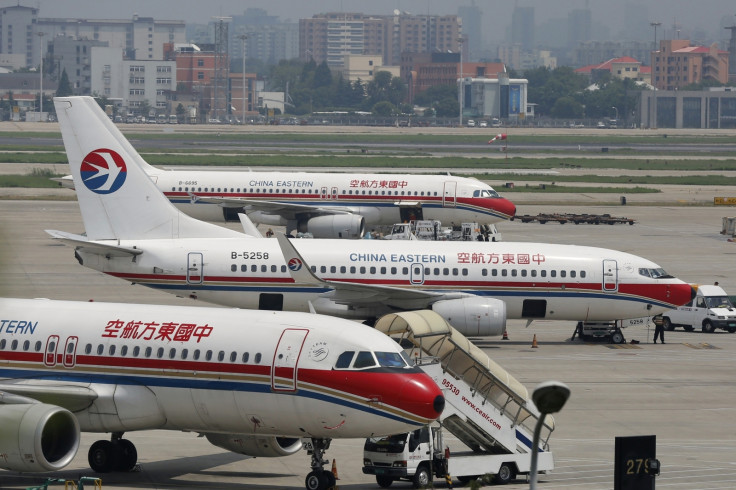China Eastern Airlines flight plunged 4,000ft in accident after pilot mysteriously turned off radar
An Airbus A330 injured 26 people due to several alleged pilot errors while flying over Russia.

An investigation into a serious aircraft accident involving a China Eastern Airlines flight from Paris to Kunming in June has alleged that serious pilot errors are to blame for severe turbulence that injured 26 people.
On the evening of Saturday 17 June, a China Eastern Airbus A330-200 took off from Charles de Gaulle Airport in Paris, en route to Kunming in China with 218 passengers and 16 crew.
About halfway through the flight, as the aeroplane passed over Russia, the flight encountered severe turbulence that caused the aircraft to drop 4,000ft and descend and climb rapidly like a yo-yo for about 10 minutes.
Although the seatbelt sign was illuminated, many passengers were not buckled in at the time, and this caused all the passengers without seatbelts on to be thrown from their seat and hit the ceiling of the cabin then land heavily.
Fortunately, the plane stabilised after this and landed safely in Kunming almost six hours later. Four passengers were seriously injured with fractures and head injuries, while another 22 passengers had minor injuries.
Why did pilots turn off the weather radar?
Severe turbulence might have been the cause of the accident, but pilot errors are believed to have caused the rapid fluctuation in altitude, which were in excess of 5,00fpm (Feet Per Minute), travelling at airspeeds of up to Mach 0.92, with a vertical acceleration of 2.14G.
According to information given to the Aviation Herald, for an unknown reason the pilots decided to turn off the airborne weather radar system, which is critical for helping pilots avoid adverse weather. The radar was turned off when it was green, which indicates light rain. The pilots only turned the weather radar back only about 10NM (nautical miles) away from the oncoming weather, and at this point the weather radar was yellow, indicating moderate rain.
As it was midsummer and visibility was quite good in the evenings in the Northern Hemisphere, the pilots could still see the clouds clearly, so they decided to fly over the cloud tops.
Unfortunately, by making this decision, they then encountered severe turbulence above the clouds. This triggered an overspeed warning and autopilot was disengaged. The pilot and co-pilot then used the sidestick controllers to apply thrust, which then caused the plane to climb, nose-up, by 12,000fpm, and then descend nose-down at 12,300fpm.
Why you should avoid clouds

Flying over cloud tops can be useful to avoid turbulence, reduce travel time time and give the pilot a more direct route, but it is often not advisable because the pilot cannot see the ground and you never really entirely know where the tops of the clouds are, even when aided by instruments.
It is not uncommon for an aircraft to be flying on top of the clouds, and then suddenly the top of the clouds rises to become an impenetrable wall further ahead.
According to Aviation Safety Magazine, every year the US National Air Traffic Controllers Association gives at least one award out to an air traffic controller who has had to talk a pilot stranded on top of the clouds back down. It is commonly advised that pilots who find themselves in this situation make a 180-degree turn and try to find the hole in the clouds from which they flew the plane up through.
The overwhelming advice from aviation experts and pilot training academies is to try and avoid the cloud at all costs by flying around them, even if the pilot feels that they can maintain visibility at all times while getting to the top of the clouds.
If it goes wrong, the pilot can be stuck in the cloud in low visibility, which is dangerous, particularly if the pilot has not been trained in how to use weather instruments. This can cause the pilot to experience spatial disorientation, to lose control of the aircraft, or to make an uncontrolled descent.
According to recent stats from the Aircraft Owners and Pilots Association (AOPA), accidents from visual flight rules (VFR)-only pilots going into instrument meteorological conditions (IMC) account for over 25% of all aviation fatalities, even though only 4% of all general aviation accidents are weather-related.
So if it is so dangerous to fly at the top of clouds, and to disregard data from sensors about oncoming weather conditions and cloud formations, questions remain as to why the China Eastern pilots had their weather radar turned off.
IBTimes UK has contacted China Eastern Airlines and is awaiting a response.
© Copyright IBTimes 2025. All rights reserved.






















